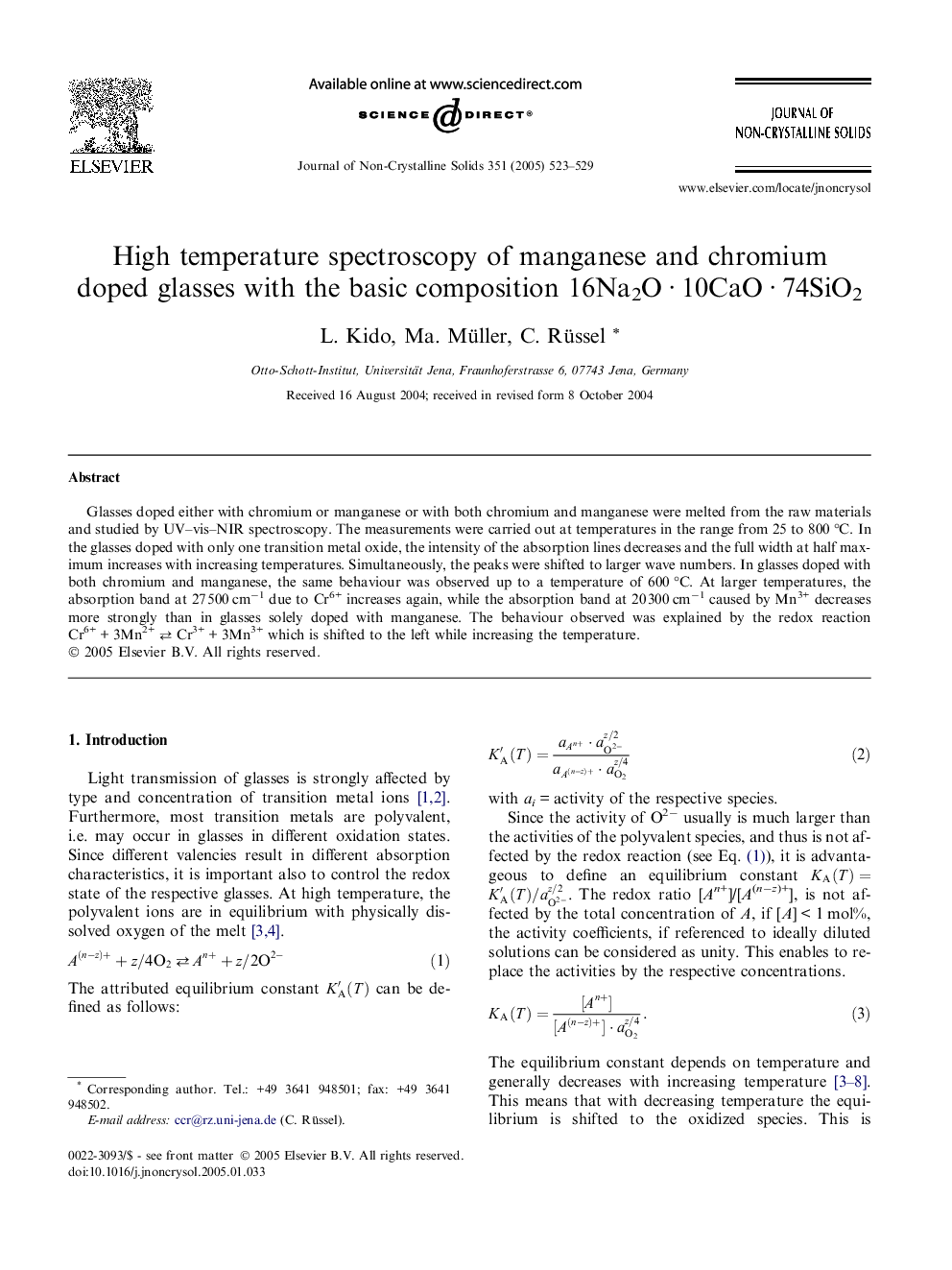| Article ID | Journal | Published Year | Pages | File Type |
|---|---|---|---|---|
| 9778215 | Journal of Non-Crystalline Solids | 2005 | 7 Pages |
Abstract
Glasses doped either with chromium or manganese or with both chromium and manganese were melted from the raw materials and studied by UV-vis-NIR spectroscopy. The measurements were carried out at temperatures in the range from 25 to 800 °C. In the glasses doped with only one transition metal oxide, the intensity of the absorption lines decreases and the full width at half maximum increases with increasing temperatures. Simultaneously, the peaks were shifted to larger wave numbers. In glasses doped with both chromium and manganese, the same behaviour was observed up to a temperature of 600 °C. At larger temperatures, the absorption band at 27 500 cmâ1 due to Cr6+ increases again, while the absorption band at 20 300 cmâ1 caused by Mn3+ decreases more strongly than in glasses solely doped with manganese. The behaviour observed was explained by the redox reaction Cr6+ + 3Mn2+ â Cr3+ + 3Mn3+ which is shifted to the left while increasing the temperature.
Related Topics
Physical Sciences and Engineering
Materials Science
Ceramics and Composites
Authors
L. Kido, Ma. Müller, C. Rüssel,
